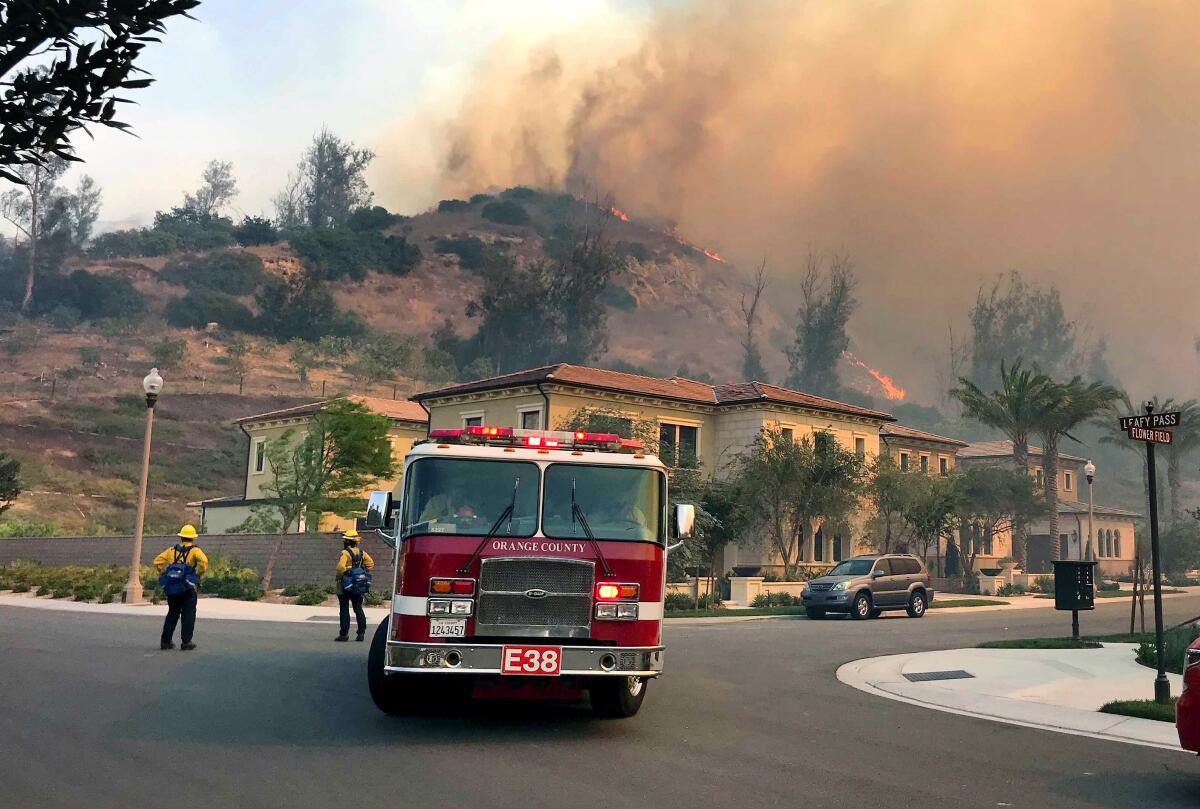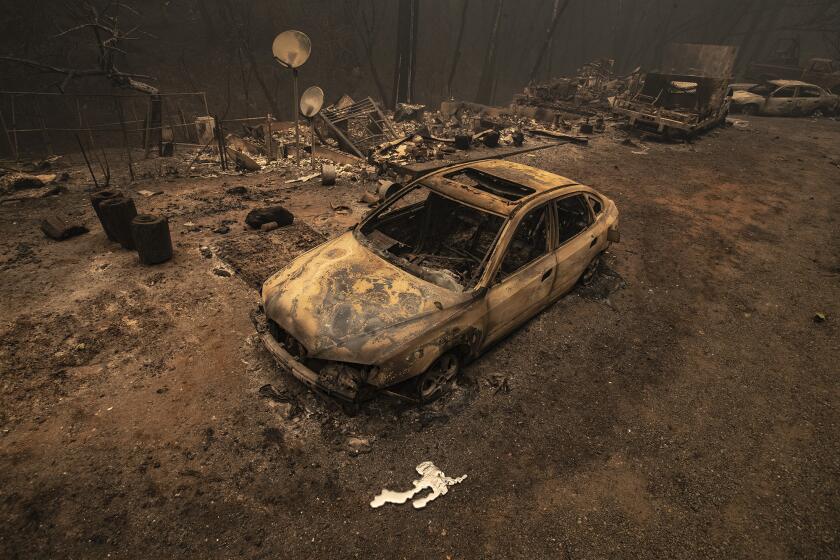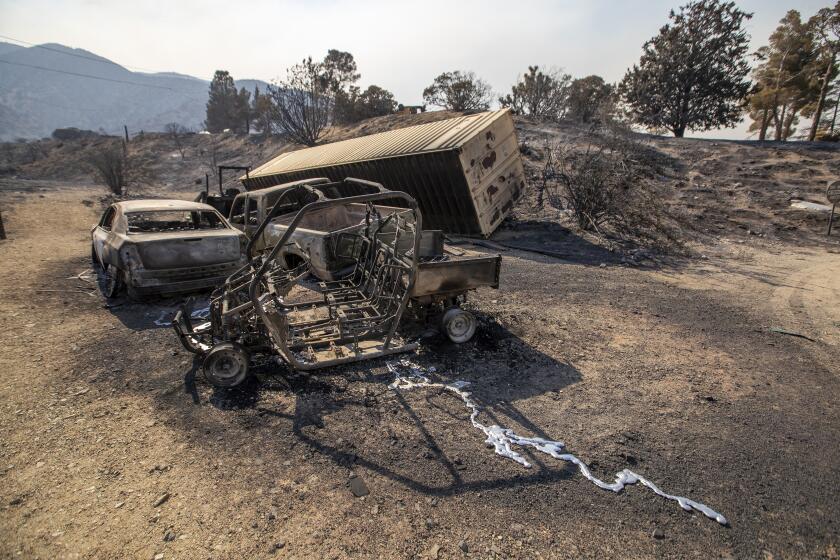Critically hurt Orange County firefighters were trapped between two spot fires

- Share via
Two Orange County firefighters critically injured last month while battling the Silverado fire were overrun by flames that were ignited when their own crew set a defensive blaze, according to a preliminary report of the incident.
In a Green Sheet report summarizing serious injuries on fire incidents, investigators detailed how the two firefighters were part of a team of eight who suddenly became trapped between two spot fires on Oct. 26.
The firefighters were positioned uphill of an ongoing “firing operation,” or a relatively small, defensive fire that crews use to burn vegetation and possibly alter the path of larger, uncontrolled wildfires.
Crews had set the defensive fire at the bottom of a slope, in dry creek bed. The expectation was the fire would burn along the creek bed, but also uphill where it would be stopped by a bulldozed containment line before reaching the firefighters.
As California suffers the worst fire season on record, residents complain that officials have ignored pleas to reduce fire risks.
The report says firefighters were scattered on the uphill side of the containment line like outfielders, watching for fires sparked by wind-blown embers — a well-known risk in windy conditions.
Sometime during or after the time the creek fire was set, a spot fire erupted 80 feet beyond the containment line and uphill of the firefighters in a bed of bone-dry fuel. The blaze grew in size from 5-by-15 feet to 100-by-100 feet “in an estimated five to 10 seconds,” according to the report.
The firefighters moved up the slope to attack the fire, the report said.
But simultaneously, a second spot fire erupted downhill from the firefighters who were working the first spot fire. “A [firefighter] shouted, ‘Get out of there, there’s a spot!’” the report said.
A wildfire expert who was interviewed by The Times and who had read the report, speculated that the area blew up in a sort of “area ignition,” where vegetation is so dry and the air so hot that light fuels like grass will spontaneously combust, “like gasoline going off.”
Six of the eight firefighters made it out of the path of the second spot fire with singed hair, the report said. But the remaining two suffered critical burns, leaving their protective clothing scorched and in tatters. Both men remain hospitalized.
A moratorium announced last month protecting homeowners now includes ZIP codes near the Bobcat fire
Frank Carroll, a retired, 31-year firefighting veteran with the U.S. Forest Service, who led hotshot crews and managed firefighting strategy during his career, said the incident revealed the inherent risks of battling wildfires in high winds. It would be unfair to second-guess the crews for setting defensive fires in such conditions, since the fire broke out on the outskirts of suburban Orange County and was moving toward homes, increasing the urgency of containment.
“That’s a huge difficult problem when you’re a firefighter in charge, what are you supposed to do?” he said. “If you fail to put that fire out, people are going to die. So firefighters are trained to use all their tremendous skills and training to catch those fires and put them out. And sometimes things go south.”
Carroll characterized California as “some of the most dangerous initial-attack fire country in the whole United States ... The rest of the country looks at California and these ... high-dry winds that come down and it just scares the hell out of us.”
The report noted that the conditions found in the incident were common to incidents where firefighters suffer injuries — working a small section of a large fire; working in relatively light fuels and working with fire that moved uphill.
The incident served as a reminder that, among other things, firefighters need to recognize how quickly conditions can change around them and plan for it. They must also analyze the risks versus gains when developing a plan.
In light of how fast the flames were moving, the injured firefighters made the right choice in running instead of trying to deploy their fire shelters, a move of last resort when firefighters are overrun, Carroll said.
“It takes 30 seconds to pull out your fire shelter and get in it, if you’re really well-trained and focused,” he said. “They had no time to get out. If they had stood still to rip out their shelters, they would’ve died standing there.”
More to Read
Sign up for Essential California
The most important California stories and recommendations in your inbox every morning.
You may occasionally receive promotional content from the Los Angeles Times.











